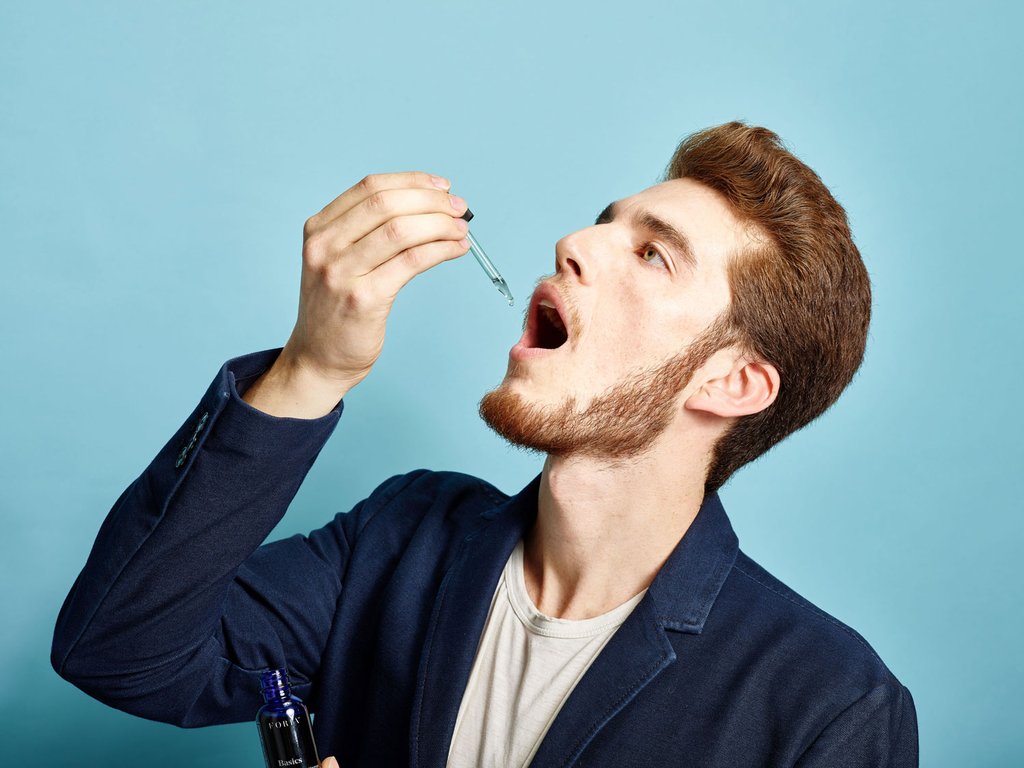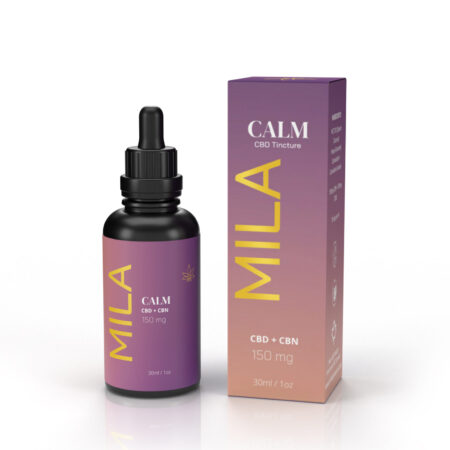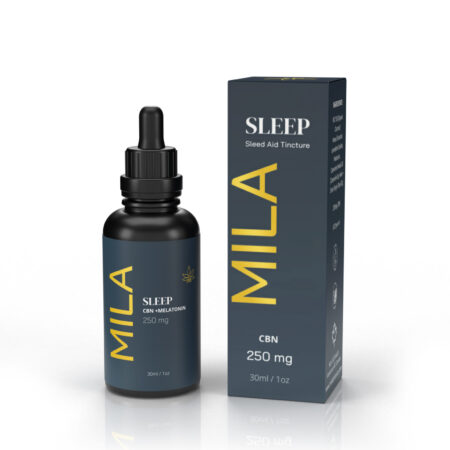Though there’s plenty of information for Canadians out there concerning the health benefits CBD might offers, it’s more difficult to find information about proper CBD oil dosage. The reason for that is quite simple: the “proper dosage” for CBD is not yet known.
As research on CBD oil dosage began only recently, there are still many things we don’t fully understand. For one, the way CBD interacts with your endocannabinoid system (ECS) is not yet fully understood. Then there’s the ECS itself. It’s a highly complex system, and only recently discovered. We have only just begun to explore it. In fact, the ECS was only named in 1992.
Each person responds to CBD a little bit differently and different doses will affect your endocannabinoid system, and your body, differently. The same dose you would use to treat chronic pain won’t be as effective for insomnia, anxiety, epilepsy or the myriad of other conditions we’re discovering CBD may help you with. Doses will also vary according to your weight and your natural tolerance to CBD.
For all of these reasons, there’s no way for anyone to tell you what dose you need for your particular condition. This is why sites are banned from advertising that CBD cures cancer and from making other unverified claims. However, there is a way to use CBD safely and quite effectively, it just requires a little experimentation and self-observation.
Full Disclosure: Linked products in this article point to items for sale in our shop. You’ll also find helpful product recommendations at the end of the article.
Do varying CBD Oil dosage affect our bodies differently?
Indeed, they do! There are many receptors CBD can bind to in our bodies—over 65 in fact! CBD binds with the receptors it has the highest affinity for first. At a low dose, CBD binds only to those receptors with which it has the highest affinity. But at higher doses, those receptors get saturated. The excess CBD that can’t bind to high-affinity receptors moves on to other receptors in our bodies. This binding to other receptors leads to the experience of different effects.
Two important things to remember about CBD is that 1) the way consume CBD affects how much is absorbed, 2) and that CBD is biphasic.
When speaking of how much CBD is absorbed and actually gets to the receptors, we use the term “bioavailability.” Bioavailability varies quite dramatically depending on how you’ve consumed your CBD.
The human digestive tract is quite efficient at removing cannabinoids. When consuming in edible form, a large amount of CBD compounds is scrubbed out before it reaches the bloodstream. In addition, when ingesting CBD this way, the effects of CBD come on more slowly and are felt over a longer period.
When consuming CBD by smoking flower or vaping, your lungs filter a little CBD out, but more gets into your bloodstream compared to through your digestive system. The effects come on more quickly but don’t last as long.
 One of the most popular ways to take CBD these days is to administer drops of CBD oil under the tongue, often called taking CBD “sublingually.” The advantages of this method are that it is far easier to measure out a dose of CBD oil using a measured dropper then to estimate how many mg you’re getting by vaping. You’ll also get more CBD into your system than you would through an edible. This is because there are a large number of blood vessels under your tongue. CBD can be absorbed into these blood vessels and bypass the digestive system.
One of the most popular ways to take CBD these days is to administer drops of CBD oil under the tongue, often called taking CBD “sublingually.” The advantages of this method are that it is far easier to measure out a dose of CBD oil using a measured dropper then to estimate how many mg you’re getting by vaping. You’ll also get more CBD into your system than you would through an edible. This is because there are a large number of blood vessels under your tongue. CBD can be absorbed into these blood vessels and bypass the digestive system.
If using the sublingual method, remember not to swallow the oil right away. Make sure to leave the tincture under your tongue 30-90 seconds. The blood vessels under your tongue are close to your brain. Therefore, the sublingual method is also one of the quickest for getting CBD to receptors to your brain.
Next, CBD is biphasic. That means that at one dose, CBD will have an effect while at another dosage CBD will have a different effect.
Alcohol is a good example of another biphasic compound. Below a certain level of blood alcohol content (BAC), alcohol is a stimulant. It’ll make you feel energized, confident and sociable. But this changes with dosage. When your BAC gets too high, alcohol goes from a stimulant to a depressant. Your cognition and coordination are reduced, and your mood can go dark.
Although CBD is biphasic, it’s not identical to alcohol. It’s not as simple as a stimulant at one dose and and a depressant at another. What’s important to understand is that changes in CBD oil dosage will change the effects you experience.
The key to dosage, for newcomers to CBD especially, is to “Start Low and Go Slow.”
As it’s currently impossible to prescribe dosage accurately, finding your ideal CBD dosage is going to involve a process of experimentation. Start with low dose of 5-10mg and go up from there.
This process of experimentation can last 1-2 months. During this time, it’s essential that you keep a daily journal where you record your CBD dosage and notes about your self-observations. How much joint pain did you have? How many times did you yell at your kids? Mood, anxiety, sleep, pain, appetite and things of this nature are good to record.
After a week, increase your dosage by 5-10mg and repeat the process. Continue with the self-observation and keep daily notes. This is also good for promoting keen self-awareness.
After a month or two you can look back through these notes and see in detail how different dosages affected you and you should have a much clearer idea of the ideal dose for you.
The gradual approach is important. Trying to take shortcuts and just doubling the dose won’t guarantee success. CBD is biphasic. Doubling your dose doesn’t mean it’ll double the effectiveness. In fact, it could be less effective than your original dose. That’s why the gradual approach is better. You’ll have a better chance of finding your “sweet spot.”
CBD oil dosage calculation
Though we can’t offer precise guidance for dosage, we can offer a starting point. Use the chart below to identify a starting dose that best aligns with your weight and the severity of your condition. Bear in mind, this chart does not factor in any tolerance you might have for CBD, and it does not constitute medical advice.
| Weight | |||||||
| <25lbs | 26-45lbs | 46-85 lbs | 86-150 lbs | 151-240 lbs | >241 lbs | ||
| Pain: | |||||||
| None- Mild | 4.5 mg | 6 mg | 9 mg | 12 mg | 18 mg | 22.5 mg | |
| Medium | 6 mg | 9 mg | 12 mg | 15 mg | 22.5 mg | 30 mg | |
| Severe | 9 mg | 12 mg | 15 mg | 18 mg | 27 mg | 45 mg | |
When determining CBD oil dosage, try and find a brand that offers bottles with measured droppers. These make it easier to measure out doses.
Remember to increase your dose gradually, to self-observe and to keep a journal.
How do I take CBD the right way for my condition?
There many ways to take CBD, including sublingually, vaping/smoking, in capsules and edibles, but you can also use CBD topically, in CBD skin cream, or take a CBD suppository.
The way you take CBD can affect how you feel the effects, as well as where. Unless CBD reaches your bloodstream, it basically stays where you applied it. Using CBD oil, or a CBD cream on your abdomen near your uterus can help assuage PMS cramps for example.
| Health Issue | Treatment |
| Anxiety | 1-3 times daily oral supplement + vape pen as needed |
| Arthritic pain | 1-3 times daily oral supplement + topical as needed |
| Sleeping | Oral supplement to be used 1-2 hours before bed. |
| Sexual pleasure | Topical vulva spray as desired |
| Menstrual cramps | Vaginal suppository, topical CBD as needed |
Before you take CBD, think on the intended target. If targeting your brain, immune system or blood, it’ll be more effective if CBD travels through your bloodstream. If the bloodstream is the target, the best ways to get CBD into your system would be sublingually or vaping/smoking.
If targeting joints or muscles, you can combine sublingual CBD oil with a topical CBD cream on the target area. This way you can address systemic inflammation as well as local inflammation.
Gummies or capsules can be well suited to sleep or anxiety. A gummy in the morning slowly introduces CBD into your system in the smoothest, mellowest way possible, reducing anxiety and increasing focus. 1-2 at night can fight inflammation and increase sleep quality.
What’s the right CBD dose for my weight?
Again, this is not medical advice, but a safe starting point. Here is the formula for calculating an initial dose according to weight:
0.1mg per pound of body weight.
So that means an individual weighing 100 pounds can safely start on a dose of 10 mg/ day. Start here and increase your dose gradually while keeping a journal of your daily self-observations.
Any advice for how to use CBD for particular conditions?
Simply put: No.
Much more research will have to be done before anyone can accurately prescribe CBD for particular conditions. The best we can do is offer some very basic guidelines. This is not medical advice. What follows are simply safe suggestions for where to start with various conditions. The numbers below have not been arrived at scientifically, but anecdotally. These numbers come from people self-reporting the doses that are effective for them.
Chronic pain: 2 to 20 mg a day.
Anxiety: 10 to 20 mg a day.
Epilepsy: 200 to 300 mg a day.
Glaucoma: 30 to 40 mg a day.
Insomnia: 50 to 150 mg a day.
Depression: 2 to 10 mg a day.
 Which CBD is best for me? Full Spectrum or Hemp CBD Oil – No THC?
Which CBD is best for me? Full Spectrum or Hemp CBD Oil – No THC?
Full Spectrum CBD Oil is, in general, more popular than Hemp CBD Oil – No THC. Though it hasn’t been proven by science, most people claim that Full Spectrum CBD Oil works better for them than the alternatives. The reason for that may be because Full Spectrum CBD Oil contains all of the natural terpenes, cannabinoids and flavonoids of the hemp plant. Some research indicates that whole plant extract CBD—like that found in Full Spectrum CBD Oil—may be more effective than a THC-free CBD oil made with CBD isolate.
CBD isolate is a powder that is 99.9% pure CBD. This substance has been refined from the whole plant extract in order to remove THC and isolate CBD.
For those with sensitivities or allergies to THC, a Hemp CBD Oil – No THC is your best choice. Likewise if you are periodically drug-tested. Full Spectrum CBD Oil contains trace amounts of THC which can be detected on a drug test—even if it is only present in trace amounts. If THC is a problem for you for any reason, it’s likely you should stick to Hemp CBD Oil – No THC.
Can I overdose from CBD?
No. CBD is highly safe and considered “well-tolerated” by humans even at large doses (according to the WHO). CBD is non-toxic and non-addictive. There are few, if any, side-effects.
In the case of unusually large doses for beyond the recommended amount, it is possible to experience side effects including nausea, diarrhea, fatigue, changes in appetite and other fairly mild symptoms. It’s not recommended to take large doses over 1000mg. As we mentioned before, more CBD is not necessarily better.
What are the most common uses of CBD?
In a 2018 study, almost 62% of CBD users reported using CBD to treat a medical condition. The top three medical conditions were pain, anxiety, and depression. According to a study by SingleCare in 2020, the most common uses of CBD for Americans were pain relief (64%), anxiety (49%), and insomnia (42%).
MEDICAL DISCLAIMER
This site is for informational and educational purposes only. The information contained is not intended as medical advice, and cannot be used as a substitute for the medical advice of a physician or medical professional.




